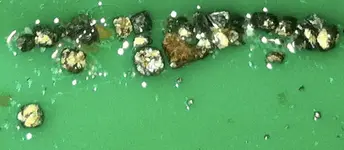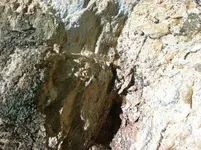Floristweb
Full Member
- Joined
- Feb 21, 2015
- Messages
- 129
- Reaction score
- 141
- Golden Thread
- 0
- Location
- South Carolina
- Primary Interest:
- All Treasure Hunting
Did a few minutes of digging around a quartz vein today; I ended up with this in the pan. It is heavy and gold in color. Hoping its gold but I haven't seen any posts about gold with ironstone attached to it. I am soaking it in CLR to see if it will eat off the iron. Does anyone know how long I should soak these little nuggets? If this is AU then I hope I have many days of finding it ;-) I spent at least 10 minutes digging around that quartz vein with a hammer, so if its real I'm pretty sure that would be a good take. What do ya'll think?



Upvote
0







